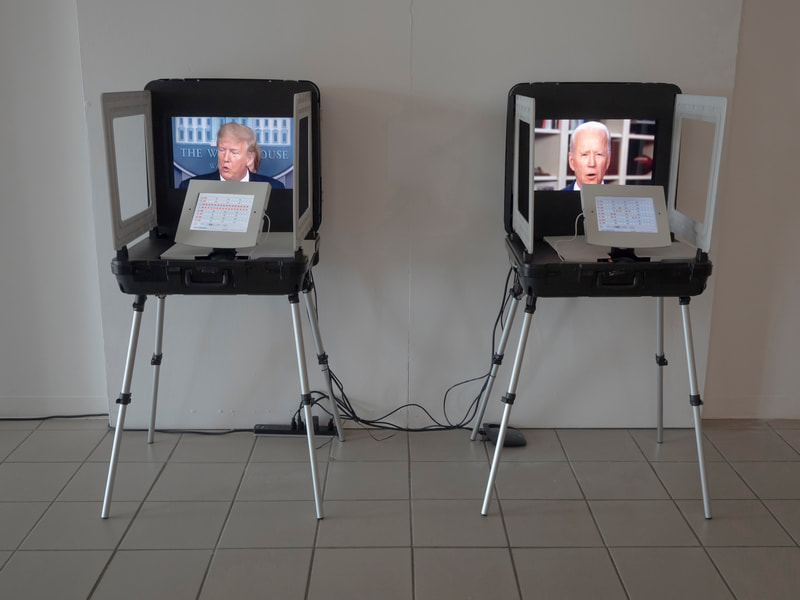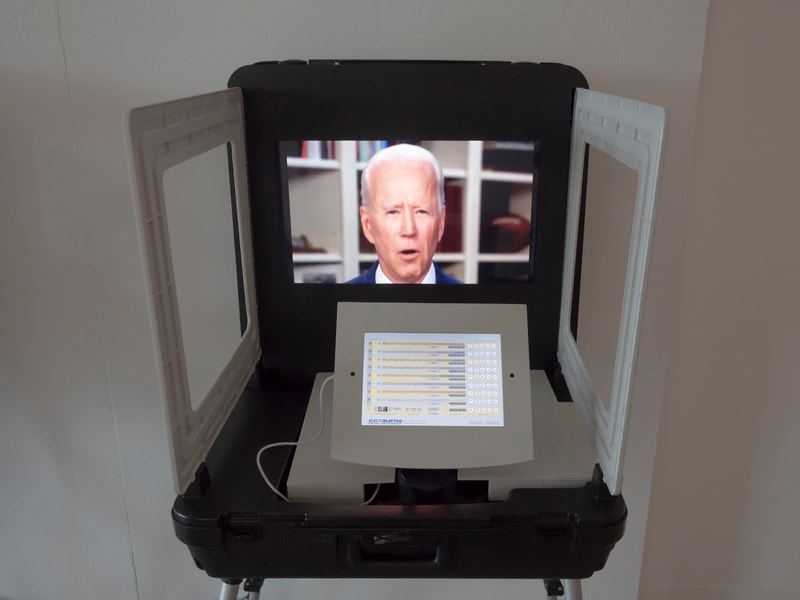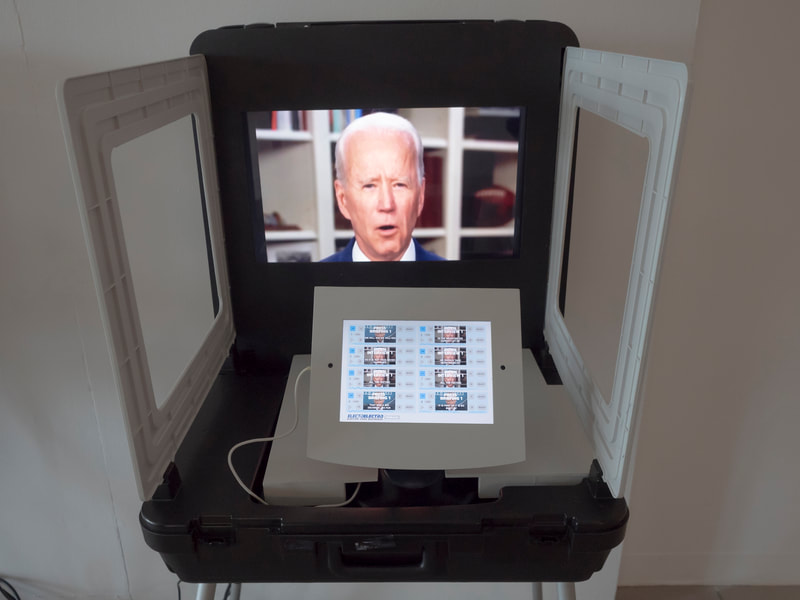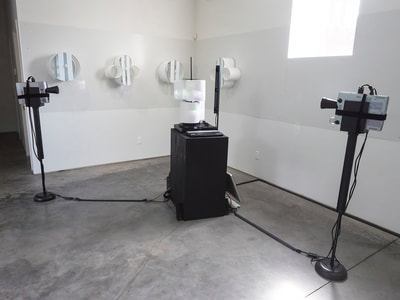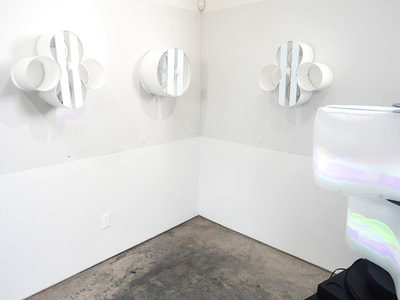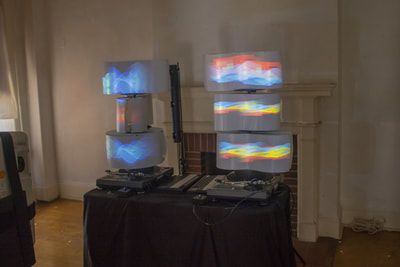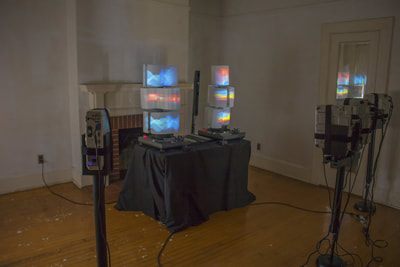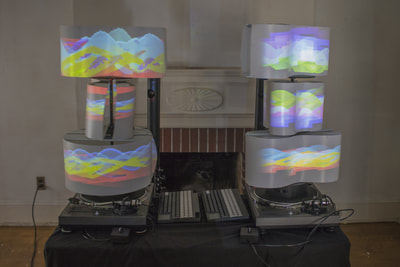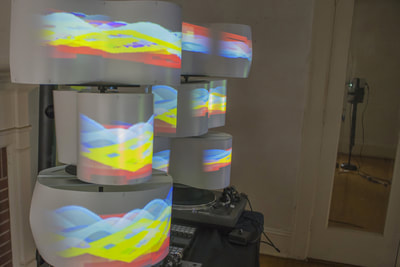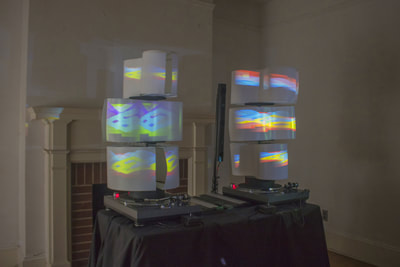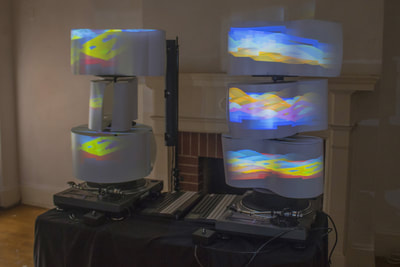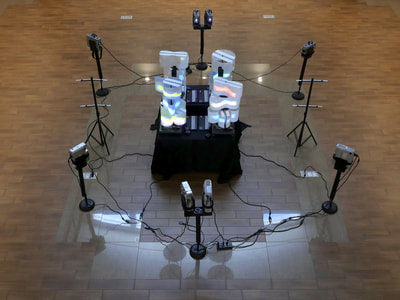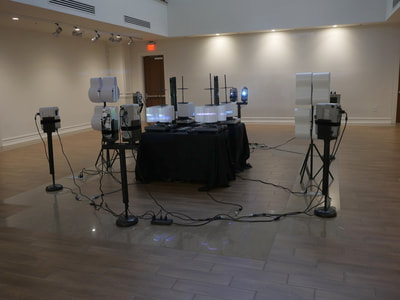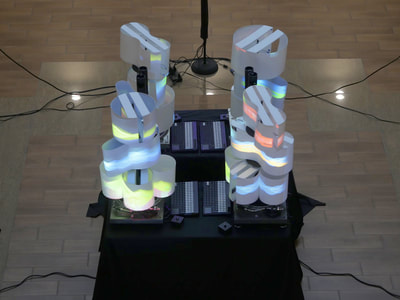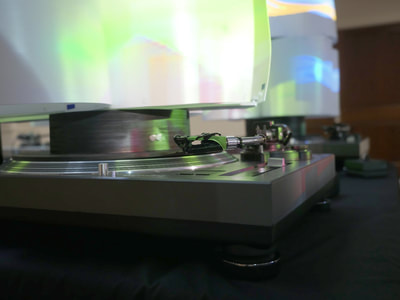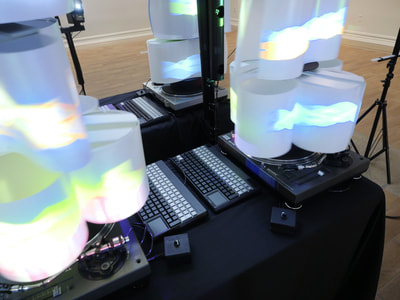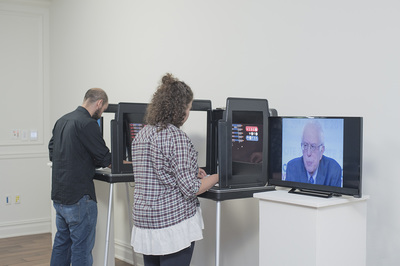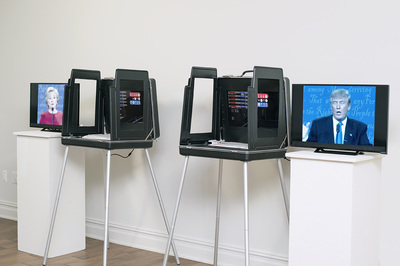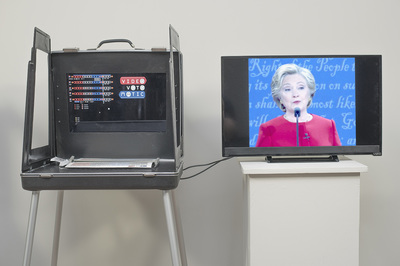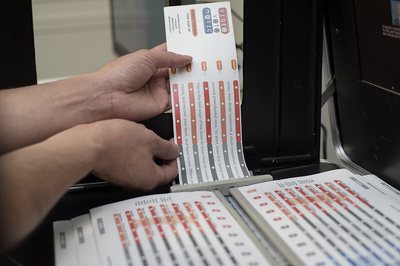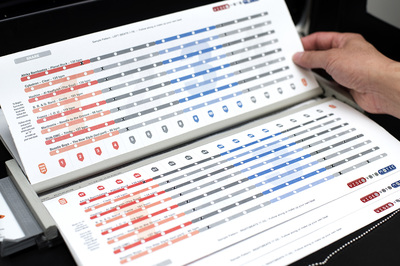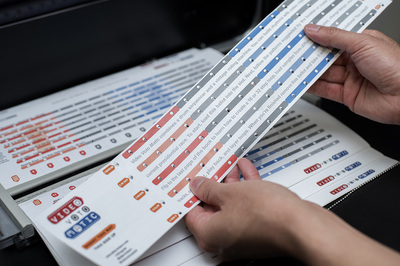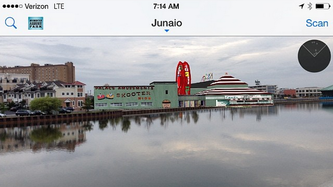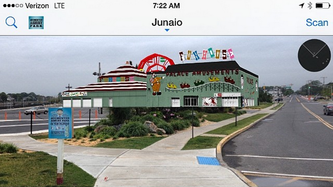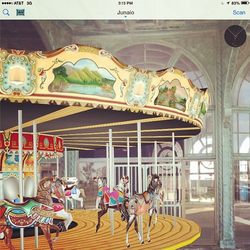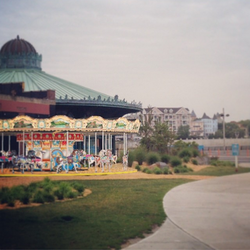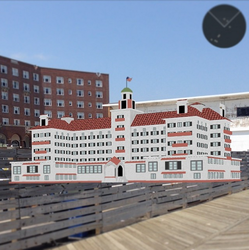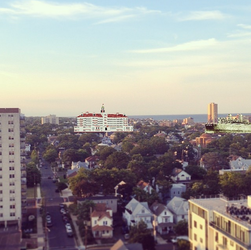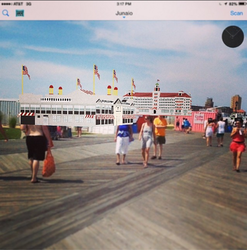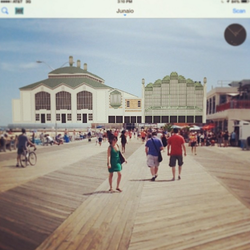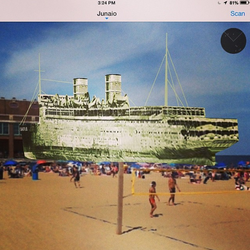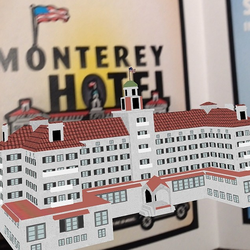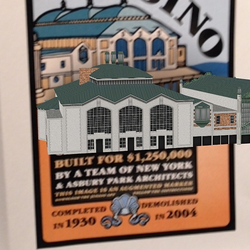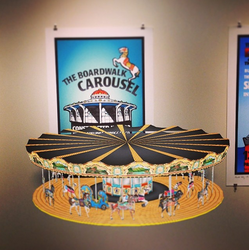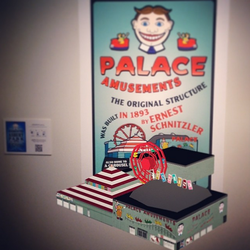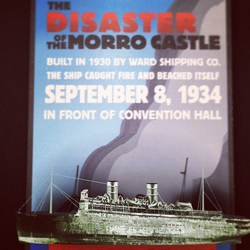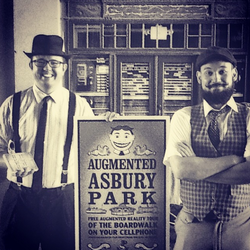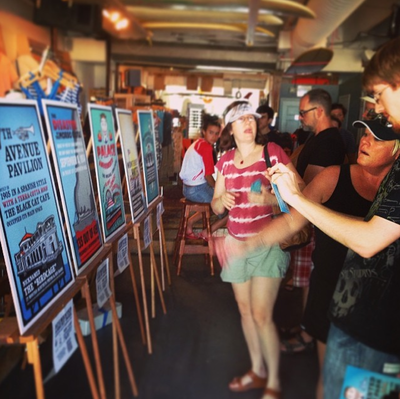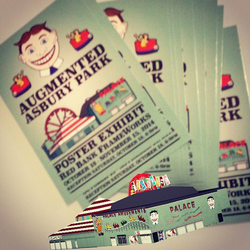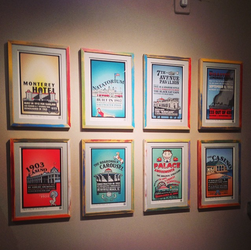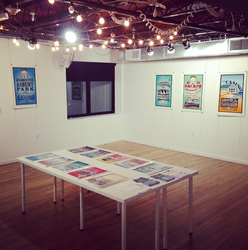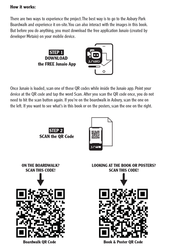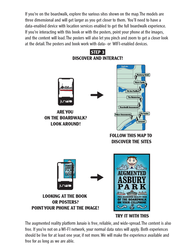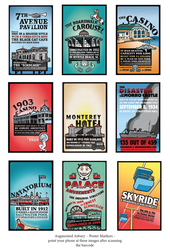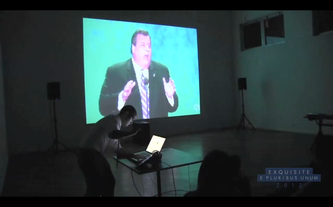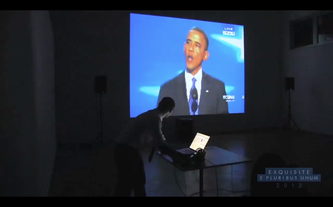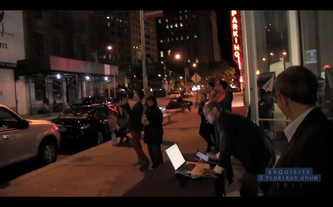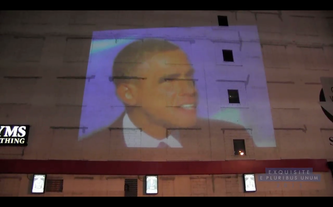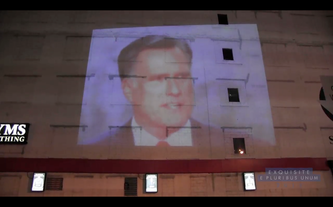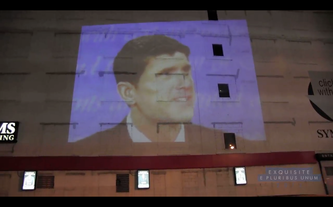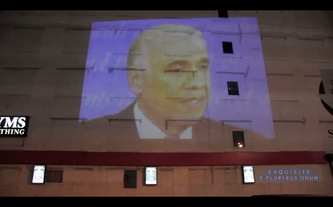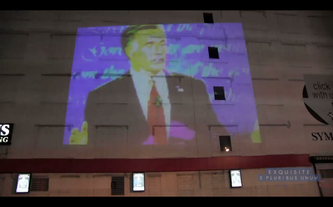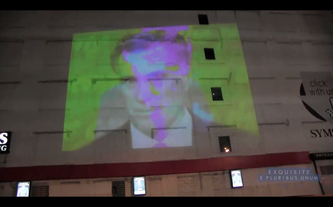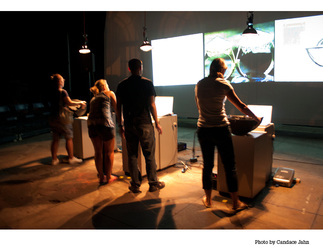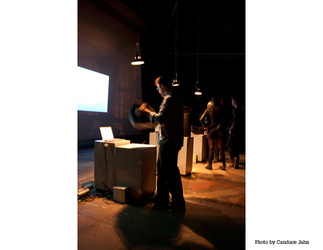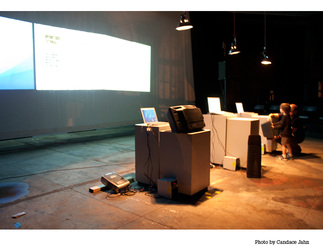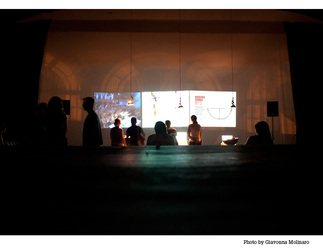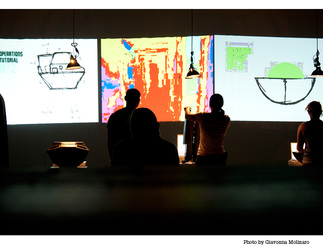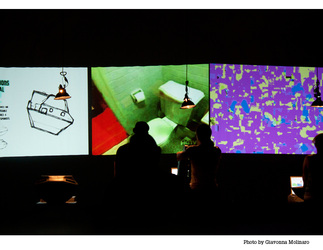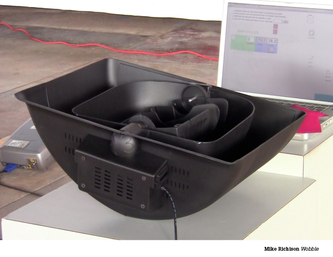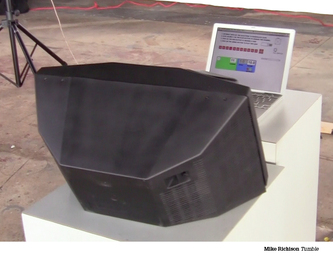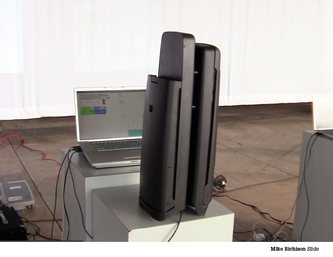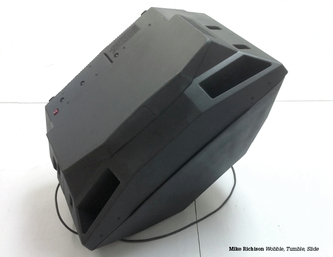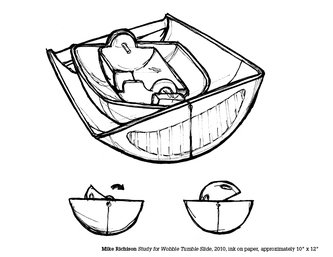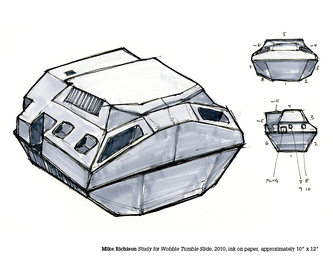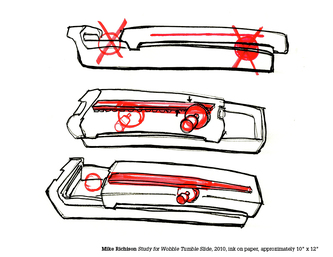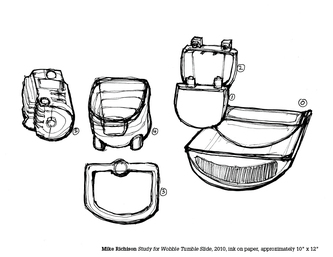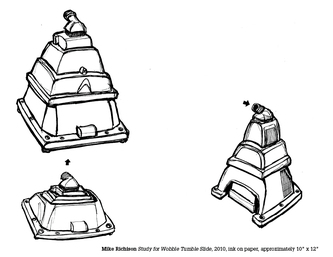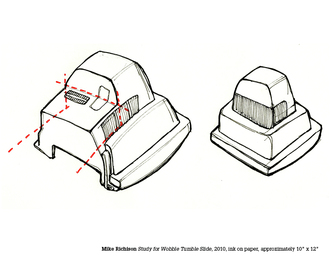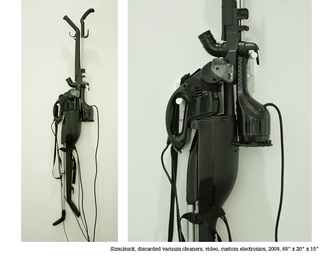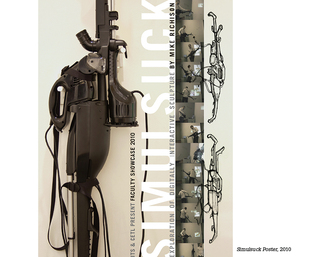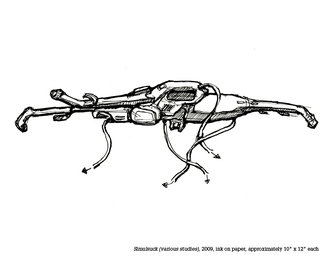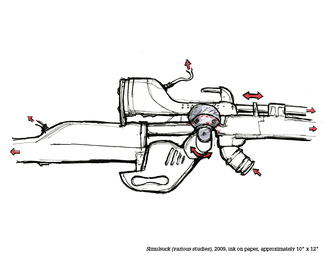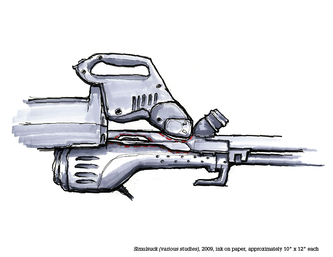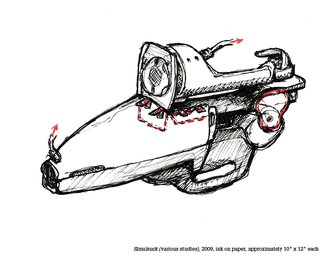Electo Electro 2020
Electo Electro 2020 is an interactive installation combining audience participation, music, news footage, and politics. It consists of Diebold Accuvote voting booths, iMacs, iPads, and small speakers. A custom Max MSP Jitter patch makes it possible for participants to remix videos from political rallies, debates, and news in a structured sixteen beat loop. The video clips sample parts of words in order to build percussion tracks, resulting in a breakdown of language. The touchscreen design is a parody of the touchscreen system employed by the Diebold Accuvote, a voting system that is difficult to audit and susceptible to hacking. The parody continues into the format of the installation itself which will resemble a polling station. The interactive graphic user interface is also a reference to musical devices such as the Roland TR 808 and other drum-machines and electronic musical instruments. This project is a work in progress and will conclude at the end of the 2020 election cycle. The final iteration will consist of eight networked stations that will share a tempo and can function like one large instrument.
Visit www.electoelectro.com for more information.
Click on the images below to see detailed images of the installation.
Visit www.electoelectro.com for more information.
Click on the images below to see detailed images of the installation.
Spin Stack
Spin Stack is comprised of a turntable with an extended spindle, custom sculptural forms, and projectors. Participants are invited to build tracks and beats by stacking the custom-made projection surfaces. Resembling lampshades, these mini-sculptures interact with a bank of distance-measuring sensors. The shapes of the pieces determine the pattern of the sound. Changes in the sound are registered in the shape, color, and stability of the projected sound wave image. A custom keyboard allows for further customization by adding a pulse and articulating a beat with percussion.
Click on the images below to see detailed images of the installation.
Click on the images below to see detailed images of the installation.
Spin Stack - Single Station Version (2017)
Spin Stack - Networked Two Station Format (2018)
Spin Stack - Four Turntable Installation (2018)
Video Voto Matic
Video Voto Matic converts a vintage voting machine into a video sequencer. The Max MSP Jitter interface manipulates and sequences video from the presidential candidate debates. Users punch their rhythm into a “voting booklet” that mimics the infamous Votomatic voting machines.
Click on the images below to see detailed images of the installation.
Read about the project:
CDM.link
factmag.com
The Creators Project
Special thanks to Ty Poland for Camera Work and Photography. See his work here.
CDM.link
factmag.com
The Creators Project
Special thanks to Ty Poland for Camera Work and Photography. See his work here.
Augmented Asbury Park
Augmented Asbury Park is Asbury Park's first augmented reality tour of the boardwalk. Augmented reality allows people to see a three-dimensional image on the screens of their mobile devices as an overlay on top of their realtime experience. The 3D content can interact with a flat image called a marker or it can exist out in the open at a specific geographic location. Augmented Asbury Park uses both methods. Seeing the project onsite is the best way to experience it, however, the project website www.augmentedasburypark.com provides free downloadable markers that serve as portable sites for the 3D models. This enables the content to be distributed to the local community and schools.
We launched June 29, 2014 with a tour of the boardwalk. In order to answer questions and to help people through the experience, we conducted guided tours every Sunday throughout July. In addition to the walking tours we conducted over the summer, we also presented Augmented Asbury Park at TEDxNavesink, MakerFaire NYC, The Glory Days Conference at Monmouth University, and the Asbury Park Historical Society. Posters from this project have been the focus of three exhibitions, one at CoWerks in Asbury Park, another at Red Bank FrameWorks in Red Bank, and the last at Eastern Michigan University in Ypsilanti, MI. We also plan to collaborate with other organizations to spread this project as an educational resource.
Read more about the project at www.augmentedasburypark.com
Follow the Project on Instagram Check out our Etsy Page Download the Press Release
Please click on the images to see more detail.
We launched June 29, 2014 with a tour of the boardwalk. In order to answer questions and to help people through the experience, we conducted guided tours every Sunday throughout July. In addition to the walking tours we conducted over the summer, we also presented Augmented Asbury Park at TEDxNavesink, MakerFaire NYC, The Glory Days Conference at Monmouth University, and the Asbury Park Historical Society. Posters from this project have been the focus of three exhibitions, one at CoWerks in Asbury Park, another at Red Bank FrameWorks in Red Bank, and the last at Eastern Michigan University in Ypsilanti, MI. We also plan to collaborate with other organizations to spread this project as an educational resource.
Read more about the project at www.augmentedasburypark.com
Follow the Project on Instagram Check out our Etsy Page Download the Press Release
Please click on the images to see more detail.
Special thanks to Dave Corniola, Joe Seminario, Steve Taikina (3D modeling), Amanda Stojanov (Layout)
16 Step Social
16 Step Social is a video beat sequencer comprised of a custom controller, a Max MSP Jitter interface, and the free Instagram API. Users can download Instagram videos through the interface and edit the clips, build rhythms, add effects, and layer beats indefinitely. The Arduino-based controller was inspired by the Roland TR 808, and it works in tandem with the computer interface. Uers can search for specific hashtags or upload their own Instagram video from their cell phones. Audience members can participate in a performance by posting videos with a predetermined hashtag. (2015)
Exquisite E Pluribus Unum 2012
Utilizing the 2012 presidential campaign footage as raw material, this performance samples words, phrases, breaths, pauses, and other sounds and silences in order to build percussion tracks, melodies, and solos.
Screenshots from the performances at Artist Outpost Resource (Ridgewood, NY) and 3 Legged Dog (New York, NY)
Altbauten aufbauen (Building Old Buildings)
This piece utilizes the Microsoft Kinect and Max MSP Jitter to track hand movements and trigger video collages of collapsing buildings. By moving their hands in front of the Kinect camera, audience members can control the placement and height of imaginary buildings. The structures, which resemble abstracted houses and apartment complexes, appear to be "rebuilding" themselves until they crumble and fall off the screen. The title is a play on the name of the German industrial group Einstürzende Neubauten, which translates to “collapsing new buildings.” (2012)
Learn more about the KVL tracker here.
Wobble Tumble Slide
Wobble Tumble Slide, also combines video, performance and sculpture. This piece, however, relies entirely on audience interaction. Rather than involving one performer and one controller, this new installation consists of three controllers, three video channels, and multiple performers. When viewers enter the installation, the video screen show a silent instructional loop. By picking up the sculptures and manipulating them by shaking, rocking, and otherwise interacting with the moving parts, participants alter and edit the sound and appearance of the projected video clips. Like Simulsuck, Wobble Tumble Slide is a performance, but a performance that requires the participation of the viewer. The audience member is simultaneously the viewer and performer. This is documentation from an interactive video piece that was installed at the carousel house in Asbury Park, NJ at the end of September, 2010.
Installation views, details, and drawings
Simulsuck
This piece utilizes a custom video controller comprised of discarded vacuum cleaners. The controller houses interactive electronic meters and dials that feed information such as volume and rate into the computer program Max/MSP/Jitter. The program then outputs the video while altering it according to the incoming data. For the video component, I gathered television commercials for cleaning products such as mops, sprays, sponges, and, of course, vacuum cleaners. The result is a rhythm-based improvisational musical performance. This clip (7 min.) is from a performance at Grizzly Grizzly Gallery, Philadelphia in August 2011.
Additional images:
Instructional animation by Justin Palamaro.
Web Hosting by FatCow
